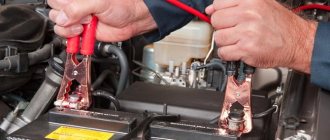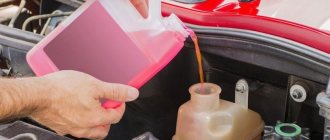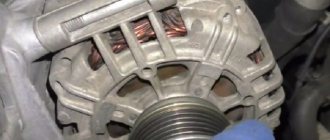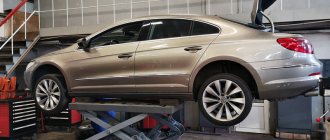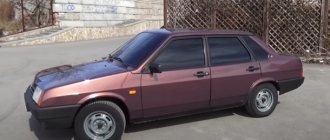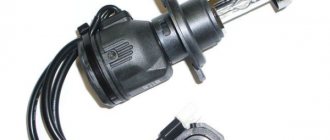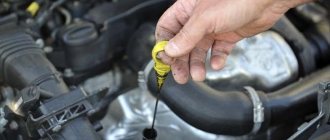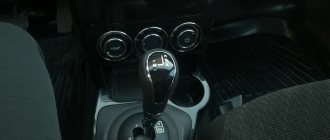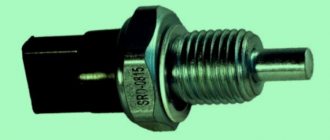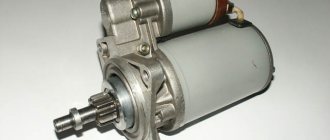The car is an important part of the daily lives of millions of people. But the machine requires proper care, since sometimes breakdowns and malfunctions occur. All of them are to a certain extent related to the characteristics of operation, or to the not very high quality of the spare parts used. If we talk about headlights, they are designed to ensure safe movement by car in the dark and in bad weather conditions. That's why they need special care. It consists of timely replacement of lamps, repair of faults and maintaining the required level of transparency of the glass or plastic case.
How to deal with fogging car headlights.
The driver does not always pay attention to a problem such as fogging in time. But ignoring this situation can lead to serious consequences. The resulting condensation turns into water droplets. Moisture contributes to the development of dangerous situations, which can result in extremely expensive repairs. Therefore, you should figure out what to do if the headlight sweats. The sooner you take on the problem, the better.
Why troubleshooting is necessary
Is the headlight foggy? What does this mean:
- It spoils the appearance of the car.
- Poor and insufficient illumination of the road at night. Often falls several times.
- Regular fogging can cause water to accumulate inside.
- Due to the presence of moisture inside the headlights, the bulbs may burn out more often than usual.
- Moisture can cause oxidation of contacts.
- The plastic becomes cloudy from the inside.
- The worst thing is that the presence of moisture and water can cause a short circuit.
When the car's optics fog up, the light does not pass through the glass, but is refracted by the condensation.
If the fogging is insignificant, then it will quickly go away on its own; just briefly turning on the low beam headlights is enough. This type of fogging is normal.
Unpleasant situations can happen in any case, so the problem needs to be solved. The main thing is to know the cause and solutions.
Possible consequences
In cases where headlight fogging is short-term, this is not a major cause for concern, but if the presence of condensation has become a common occurrence, it is worth knowing what risks may follow:
- The geometry of the light beam changes, since the fogged area on the glass or plastic certainly makes its own adjustments, thereby depriving the driver of full illumination, and what is even more dangerous, can blind oncoming motorists.
- The constant presence of moisture and water containing various salts has a detrimental effect on the mirror coating of the reflector, and also provokes corrosion on metal elements.
- Condensation provokes various electrochemical reactions that contribute to the oxidation of contacts, and in the worst case, can cause a short circuit.
- The lamp life will be significantly reduced.
Why does the headlight sweat from the inside?
Natural process
Not all car owners are aware that car headlights figuratively “ breathe ”. In other words, the air in the headlight is exchanged with the environment. The exchange occurs through the breather. These vents are a must.
When the headlights are turned on, the temperature inside the headlight begins to rise. As a result, the air expands and needs to find a way out. cold air enters the headlight through the breather .
For example, when entering a warm and damp parking lot (garage), especially if the headlights were not turned off before, the air inside the headlight will certainly pick up some moisture . The same effect can be observed when leaving a warm garage into the cold. The temperature difference will ensure air movement inside the headlight.
Previously, headlights were made in a square or rectangular shape, but now it is completely different. Large, deep and pointed headlights are increasingly common. And, as usual, the lower pointed part will fog up.
Modern lamps (LED, xenon) spend very little energy producing light, and accordingly the headlight no longer heats up so much. Thus, air exchange is carried out in very small volumes.
The headlight is sweating, what should I do if it’s new and there are no defects? The main thing is that you should panic because of this, because... this is a natural process.
The headlight sweats as a result of damage
Let's consider what could be the reasons for fogging of headlights that are not related to the natural process:
- Microcracks;
- Damage to the headlight;
- Violation of tightness;
- Violation of internal air circulation.
Microcrack on headlight glass. Even through an unnoticeable crack, water penetrates, and that’s where fogging occurs.
Depressurization of seams. The sealant tends to lose its elasticity and may crack; as a result, water penetrates into the headlight through microcracks and the condensation process begins.
This problem most often occurs in cars of domestic manufacturers. Therefore, the topic “the headlight on a Priora or Kalina is sweating” is often discussed on various forums.
Depressurization after an accident. Fogging of car optics is often observed after the car has been in an accident. Even if the optics appear intact upon external inspection, structural damage may occur.
It may also happen that you accidentally pressed the headlight; as a result, glass or plastic can easily move away from the body, and air and water will penetrate through the gap formed.
Light bulb sockets are leaking. Often there is a loose connection where the light bulb is connected. If the fog lamp sweats, then the reason will be the same - depressurization.
The breather is clogged. The headlights have a valve that allows air exchange. With its help, the headlight dries itself. Over the years of operation, they can become heavily clogged with debris and dust, resulting in no ventilation. Condensation will accumulate inside the optics and settle on the glass.
If the headlights constantly sweat from the inside and the moisture does not leave at all, then you need to contact a specialist to fix the problem, or find the place where the air is leaking and seal it. Read on to find out how this is done.
Ways to fix the problem.
In a situation where you become the owner of such a problem, it is always important to know what to do. Check out these time-tested tips and years of experience that will tell you how to fix such problems.
- Dry heating of headlights. This method does not involve operation on an ongoing basis. It is acceptable to use it once, a maximum of several times, but no more. The procedure for working with it is as follows: first, disconnect the lampshade, then allow the tension of the fasteners to loosen and slightly move them out of the recesses. Next, turn on the low beam and let the bulbs work for a while, then turn off the light and put the cap back in place. Practice shows that if you take the above steps at night, the next morning the moisture in the headlight housing should disappear.
- Inspection of seams for tightness. You should carefully examine all connecting areas and joint areas for airtightness. If cracks or minor damage are detected, it is necessary to apply a special moisture-resistant sealant. For this purpose, the best option would be a silicone-based composition. Its “lifetime” is more durable than alternative means, in addition, it has high density and water resistance and a transparent structure. These days, a similar substance can easily be found in every specialized store selling automobile spare parts. The modern market is rich in variations of sealants created to fill areas formed due to mechanical damage. They neutralize these voids, prevent further penetration of moisture, dry at incredible speed and do not interfere with the refraction of light! However, there are spots in the sun too. Among the negative aspects of such mixtures: the adhesion of dirt, which significantly reduces the productivity of the optics. In addition, the sealing composition is characterized by a fairly short life cycle. There are situations when moisture enters the headlight housing from the inside. In this situation, in order to eliminate condensation, which has become the culprit of fogging, an impressive sequence of internal sealing measures should be carried out. It involves disassembling the lamp unit and then uncoupling it from the electrical circuit. Then it is necessary to seal all the holes using special gaskets and sealing mixtures. They effectively cope with their task, but over time they lose their elasticity: liquid gets into the headlight housing, which can fill even cracks or scratches invisible to the eye.
- Contact a service station. Qualified specialists will identify problem areas themselves and advise you on the most effective solution to the problem. There are often situations when microcracks form on fasteners or seams that cannot be seen with the naked eye. Detection of such faults is impossible without the use of special optical, electronic or laser equipment. Our technicians will repair the old part or recommend replacing it with another component.
- New headlight. Sometimes, its acquisition turns out to be the best alternative to all of the above methods. The best option is to give preference to original spare parts. This way, you eliminate the possibility of buying a defective or poorly designed product.
How to fix foggy headlights
The headlight is sweating - what to do? How to deal with this :
- 5 minutes before entering a car wash or a warm garage, turn off the headlights and let the headlights cool.
- If possible, avoid sudden temperature changes.
- Do not wash the engine compartment unless absolutely necessary. Poor handling of the Karcher can cause excess moisture inside the headlight.
- Remember that foggy headlights are not a defect if the moisture disappears after 30 minutes of turning on the headlights.
- If fogging does not go away after 30 minutes, and even more so drops of water are observed inside the headlight, then this is already a defect. This headlight will have to be repaired.
It is worth considering that an increased tendency for headlights to fog up may be a design feature of this car model. If the optics dry out on their own, don't make a problem out of it. Just continue using the car.
Many automakers try to bypass this natural process and place bags of silica gel inside, which perfectly dry the air inside the headlight.
Container with silica gel in Kia Sorento headlight
What can you do to speed up the process of headlight fogging ? The headlight is sweating, what to do:
- Park the car with the headlights facing the sun;
- If the car is in a warm and dry garage, then you can open the headlight covers to allow faster air exchange;
- Using a hair dryer, you can blow air into the hole to replace the lamp;
- Place silica gel inside the headlights, as some automakers do.
But these measures are only temporary, and if there really are problems with the optics, then moisture will appear again after some time.
If there is a defect, how to eliminate fogging of headlights? There is a simple and effective way to determine that the headlight seal is broken. Remove the headlight from the car, pour water into a large container and place the headlight in it.
It is important to know! Do not lower the headlight entirely. Water may enter through the ventilation holes.
If there are bubbles , then there is an air leak. This place should be remembered and treated with sealant.
Before applying sealant, the surface must be degreased . All existing cracks must be treated. The sealant is applied carefully and evenly. After drying, the optics should be dipped again to check the result of the repair.
If a crack , then it is better to replace the headlight. A crack may appear as a result of a stone hitting the glass. They are usually not noticeable and difficult to detect visually. However, this is enough for fogging to occur.
Some car owners try to fix the problem themselves using transparent tinted film or glue. But all this does not always end successfully, because... after a while the headlight starts to sweat again. The best option to solve this problem is to replace the optics with a new one.
